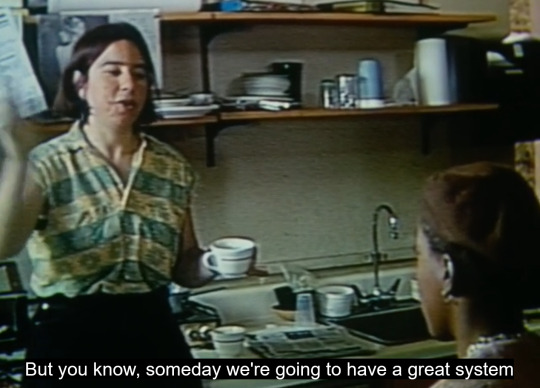#The National Library of Congress
Explore tagged Tumblr posts
Text

Ghostbusters (1984, Ivan Reitman)
10/04/2024
#ghostbusters#film#Commedia fantascientifica#united states#1984#ivan reitman#john belushi#saturday night live#cult film#comedy film#action film#horror film#comedy#AFI'S 100 Years 100 Laughs#American Film Institute#national film registry#library of congress#Compagnia Edizioni Internazionali Artistiche Distribuzione#new york city#peter venkman#ray stantz#egon spengler#parapsychology#paranormal#new york public library#ectoplasm#sample#Hypothec#proton pack#Energia psicocinetica
99 notes
·
View notes
Text




Glass
#canon powershot s70#canon powershot#canon photography#canon#washington dc#museum#smithsonian#stained glass#glasses#window#national portrait gallery#portrait gallery#african american history museum#art museum#history museum#glasscore#architecture#library#library of congress#building#old building
20 notes
·
View notes
Text
Speaking of animated movies selected at the National Film Registry, that had me thinking…why aren’t there more Non-Disney ones?
I mean, I know Shrek is there, but what about other Dreamworks classics like Prince of Egypt or How to Train Your Dragon?
What about classics like The Iron Giant, Akira, Grave of the Fireflies, Spirited Away, or heck, ANY film directed by Hayao Miyazaki? Are these people at Library of Congress implying that none of those are culturally significant enough to be put into the National Film Registry??
How about An American Tail or The Land Before Time, two Don Bluth classics that practically dominated Disney at the box office? You’re telling me THOSE aren’t culturally significant enough??? I’m just saying there’s more to animated culture than just Disney.
#national film registry#library of congress#film preservation#animation#random rant#random ramblings
28 notes
·
View notes
Text
5 notes
·
View notes
Text
DC Day 1 photo dump










#washington dc#runblr#running#run and see monuments#washington nationals#library of congress#lincoln memorial#washington monument
7 notes
·
View notes
Text
Creating Your Own History: Archival Themes in "The Watermelon Woman" [Part 1]

An archivist speaks to the film’s protagonist about having a “great system” to organize archival records within the community archive.
The Core Values Statement of the Society of American Archivists says that archivists should expand access, respect diversity found in humanity, and advocate for archival collections that reflect humanity’s complexity. [1] The reality is often different from that ideal in a field that is overwhelmingly White, as a recent article about Black archives pointed out. [2] This is evident in Cheryl Dunye’s 1996 romantic comedy-drama film, The Watermelon Woman, which the Library of Congress added to the National Film Registry in December 2021 for being “culturally, historically, or aesthetically significant.” [3] The film follows the story of one Black woman’s determined effort to create her own history and connect with the past. Although this eighty-six-minute mockumentary is over twenty-six years old, its themes of archival limits, power, silences, erasure, and fabrication continue to resonate today.
Reprinted from The American Archivist Reviews Portal. Thanks to Rose and Stephanie for their editing of this article! It was also posted on my Wading Through the Cultural Stacks WordPress blog on Jul. 5, 2022. This review contains some spoilers for the film The Watermelon Woman.
In the film, Cheryl Dunye plays a videographer (also named Cheryl Dunye) who works at a video rental store in Philadelphia with her friend Tamara (played by Valarie Walker). Cheryl watches a videocassette of an old 1930s film, Plantation Memories, and becomes interested in the character Elsie, a stereotypical ‘mammy’ character credited as “The Watermelon Woman.” She then strives to learn more about the actress who played Elsie. One of the first places Cheryl looks is in the basement of her mother’s house. Cheryl tells the audience that her mother, played by Irene Dunye, who is Cheryl’s mother in real life, throws nothing away. She says that Irene’s filing system needs updating. Her mother tells her about the films she watched growing up in the 1930s and notes that she saw “Elsie” singing in some clubs.
Cheryl continues her dogged search by talking to a person with a collection of old Black films and then traveling to the local public library, likely the Free Library of Philadelphia. After perusing the stacks, she checks out as many books as she can and talks to the reference librarian, a White man who is played by David Rakoff. Wanting information about the Watermelon Woman, she encounters her first archival limit, which scholars Sue McKemmish, Michael Piggott, Barbara Reed, Frank Upward, Jocelyn Fenton Stitt, and Sarah Tyson define as barriers created when documents pass into the hands of archival institutions from those who created them, inhibiting attempts to use records to tell family stories and circumscribing efforts to reclaim records about enslaved people. [4]
The librarian dismissively tells Cheryl to check the “Black,” “film,” and “women” sections of reference books for information about the Watermelon Woman. With much prodding, he eventually searches his computer and identifies Martha Page as the film’s director, telling Cheryl that information about Page is on a reserve desk on another floor. Although reserve desks serve students and faculty with materials typically meant for university courses, Cheryl is given an exception and is able to access the relevant information for her research. Yet, she is still unsuccessful because the materials she looks at don’t have exactly what she is looking for.
© 2022 Burkely Hermann. All rights reserved.
Notes
[1] “SAA Core Values Statement and Code of Ethics,” Society of American Archivists, accessed February 20, 2022, https://www2.archivists.org/statements/saa-core-values-statement-and-code-of-ethics.
[2] Harmeet Kaur, “How Black Archives Are Highlighting Overlooked Parts of History and Culture,” CNN, February 19, 2022, https://www.cnn.com/2022/02/19/us/black-archivists-history-culture-cec/index.html.
[3] Nancy Tartaglione, “National Film Registry Adds ‘Return Of The Jedi’, ‘Fellowship Of The Ring’, ‘Strangers On A Train’, ’Sounder’, ‘WALL-E’ & More,” Deadline Hollywood, December 21, 2021, https://deadline.com/2021/12/national-film-registry-2021-list-star-wars-return-of-the-jedi-fellowship-of-the-ring-sounder-nightmare-on-elm-street-wall-e-1234890666/. The film is available for rent on platforms such as Vimeo, Hulu, Apple TV, Prime Video, and BFI. I watched it, using my library card, on Kanopy. It can be watched free of charge on the Internet Archive.
[4] Sue McKemmish, Michael Piggott, Barbara Reed, and Frank Upward, Archives: Recordkeeping in Society (Amsterdam, Netherlands: Elsevier, 2005), 205; Jocelyn Fenton Stitt, Dreams of Archives Unfolded: Absence and Caribbean Life Writing (New York: Rutgers University Press, 2021), 42; Sarah Tyson, Where Are the Women?: Why Expanding the Archive Makes Philosophy Better (New York, Columbia University Press, 2018), 148.
#the watermelon woman#archivists#archival science#archival studies#archival#archiving#archives#1990s#1990s films#indie films#national film registry#library of congress#mockumentary#cheryl dunye#black lesbians#lesbians#lgbtq#1930s films#racial stereotyping#archival limits
82 notes
·
View notes
Note
Do you have any fave history sites you can recommend?
There aren't a ton of history website that I spend much time on, but there are two places that immediately come to mind that might be a surprising source of fascinating history content: the U.S. House of Representatives and the U.S. Senate websites! The House has a blog of sorts called "Whereas: Stories from the People's House" that has published seemingly endless pieces about really interesting Congressional history. They are usually pretty short, but I have often just got lost digging through all the little stories and following related links. It's really cool. The Senate has a similar site, called Historical Highlights, and, again, there are some really interesting stories about people, events, the artwork or architectural details of the Capitol, and much more.
Both the House and Senate also have links to information about specific traditions or symbols that are really educational and informative. And there are scores of resources that you can download from both institutions -- entire books, along with historic reports and oral histories.
Another thing that you might not know is that you can contact Senate or House historians through the websites of the respective chambers of Congress if you have questions about something and they'll actually respond. A few years back, I was working on something regarding the Vice Presidency and had a really obscure question that I just could not find an answer on. I e-mailed the Senate historian, and a few days later, they responded with a detailed answer, directions to further sources, and an offer to help if I needed any further assistance! I'm not kidding when I say that it was legitimately the most impressed I've ever been with anything connected to the United States Congress.
#History#Congress#U.S. Senate#U.S. House of Representatives#Historians#National Archives#Library of Congress
15 notes
·
View notes
Video
Health of the Spirit by National Library of Medicine Via Flickr: Series Title(s): NIH director's Wednesday afternoon lecture series Contributor(s): Alexander, Jane, 1939- National Institutes of Health (U.S.). Medical Arts and Photography Branch. Publication: [Bethesda, Md. : Medical Arts and Photography Branch, National Institutes of Health, 1994] Language(s): English Format: Still image Subject(s): Sensory Art Therapies Genre(s): Posters Abstract: Poster in shades of gray and black with a central portion showing the double helix in purple, green, and orange against a black background. The bottom portion of the poster shows silhouettes of people in the process of singing, dancing, playing musical instruments, painting, and sculpting. Extent: 1 photomechanical print (poster) : 84 x 54cm. Technique: color NLM Unique ID: 101456157 NLM Image ID: C02922 Permanent Link: resource.nlm.nih.gov/101456157
#Photomechanical Print#Spirit#Medical Arts and Photography Branch#Sensory Art Therapies#double helix#singing#dancing#playing musical instruments#painting#sculpting#Health#Posters#Congresses#Still Image#Public Domain#Free Images#Prints and Photographs#National Library of Medicine#NLM#IHM#National Institutes of Health#NIH#Archives of Medicine#NLM Digital Collection#flickr
2 notes
·
View notes
Text










The Little Mermaid has been selected by the U.S. Library of Congress for preservation in their National Film Registry, making this the 10th Disney Animated Feature selected since the NFR's formation in 1988: Snow White in 1989, Fantasia in 1990, Pinocchio in 1994, Beauty and the Beast in 2002, Bambi in 2011, The Lion King in 2016, Dumbo in 2017, Cinderella in 2018, Sleeping Beauty in 2019, and now Little Mermaid. To be included in the registry, a film must be at least 10 years old and be deemed "culturally, historically, or aesthetically significant."
It's a big deal for a film to be included in the registry as, once selected, a copy is obtained from the studio/copyright holders, after which it is lovingly restored and then placed in a weather-proof and temperature-controlled vault where it will be available for future generations. So what this means is that children will still be driving their parents up the walls with Hakuna Matata and Under the Sea even after a nuclear holocaust.
Which Disney films do you want to see selected next?
#disney animation#disney#disney animated canon#disney animated movies#snow white#pinocchio#fantasia#mickey mouse#dumbo#bambi#cinderella#sleeping beauty#beauty and the beast#the little mermaid#belle#ariel the little mermaid#the lion king#animation#national film registry#library of congress#snow white and the seven dwarfs
71 notes
·
View notes
Text

Fargo (1996, Coen brothers)
16/05/2024
#fargo#film#1996#coen brothers#1996 Cannes Film Festival#69th Academy Awards#Academy Award for Best Original Screenplay#Academy Award for Best Actress#frances mcdormand#william h. macy#steve buscemi#peter stormare#2006#national film registry#library of congress#united states#2014#Tagline#minnesota#1987#oldsmobile#minneapolis#Indigenous peoples of the Americas#Fargo North Dakota#north dakota#Contract killing#Brainerd Minnesota#Moose Lake Minnesota#woodchipper#motel
17 notes
·
View notes
Text
December 13, 2023
By Pat Saperstein
(Variety) — The Library of Congress announced the 25 features joining the National Film Registry for 2023, with titles including “12 Years a Slave,” “Home Alone,” “The Nightmare Before Christmas” and “Terminator 2: Judgment Day.” Selected films must be more than 10 years old and are selected each year for their cultural, historic or aesthetic significance to preserve the film heritage of the U.S.
These are the 25 films in chronological order:
A Movie Trip Through Filmland (1921)
Dinner at Eight (1933)
Bohulano Family Film Collection (1950s-1970s)
Helen Keller: In Her Story (1954)
Lady and the Tramp (1955)
Edge of the City (1957)
We’re Alive (1974)
Cruisin’ J-Town (1975)
¡Alambrista! (1977)
Passing Through (1977)
Fame (1980)
Desperately Seeking Susan (1985)
The Lighted Field (1987)
Matewan (1987)
Home Alone (1990)
Queen of Diamonds (1991)
Terminator 2: Judgment Day (1991)
The Nightmare Before Christmas (1993)
The Wedding Banquet (1993)
Maya Lin: A Strong Clear Vision (1994)
Apollo 13 (1995)
Bamboozled (2000)
Love & Basketball (2000)
12 Years a Slave (2013)
20 Feet from Stardom (2013)
#National Film Registry#Library of Congress#film preservation#A Movie Trip Through Filmland#Dinner at Eight#Lady and the Tramp#Edge of the City#We're Alive#Cruisin' J-Town#Alambrista#Passing Through#Fame#Desperately Seeking Susan#Matewan#Home Alone#Terminator 2: Judgment Day#The Nightmare Before Christmas#The Wedding Banquet#Apollo 13#Love and Basketball#12 Years a Slave#20 Feet from Stardom#Variety#news
9 notes
·
View notes
Text
Marvel Studios' Iron Man among the 25 motion pictures selected this year to be inducted into the National Film Registry

#tony stark#iron man#jon faverau#marvel's the avengers#marvel stories#robert downey jr#the avengers#marvel cinematic universe#national film registry#library of congress
94 notes
·
View notes
Text
♫ Piano Man ♫
What would you say to a little Billy Joel this morning? I’ve always liked this one and I haven’t played it for a while, so … In 1972-1973, Billy Joel worked at the Executive Room bar in Los Angeles as a piano player using the name “Bill Martin”. He was in dispute with his then-recording company and took the job to pay the bills while waiting for his lawyers to straighten things out back in New…
youtube
View On WordPress
#Bill Martin#Billy Joel#Executive Room piano bar#Library of Congress#music trivia#National Recording Registry#Youtube
7 notes
·
View notes
Text
3 notes
·
View notes
Text

#Madonna#2023#Library of Congress#Like A Virgin#Madonna 1984#Madonna 2023#Nile Rodgers#NatRecRegistry#Queen Of Pop#National Recording Registry#Madonna40
20 notes
·
View notes
Text

PALESTINE:
Palestine during the monarchy
Colton, G. Woolworth (George Woolworth), 1827-1901, cartographer.
#PALESTINE#the librarians#library of congress#HISTORY#NGE#never again#world history#MAP#artwork#holocaust#Auschwitz#فلسطين#تمبلر#united nations#UNRWA#LOL#ART#artist#tumblr#free gaza#freedom#euronews#heart#free palestine#artists#humor#funny#politics#pixel#meme
3 notes
·
View notes
